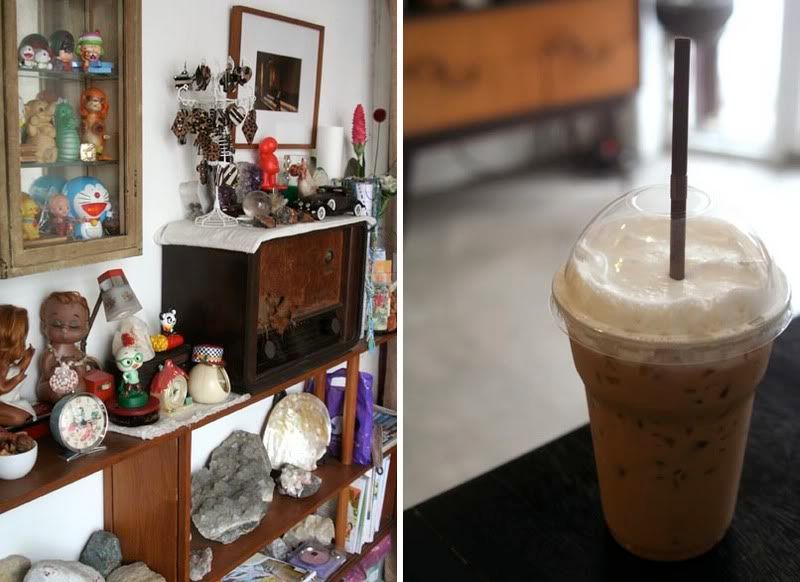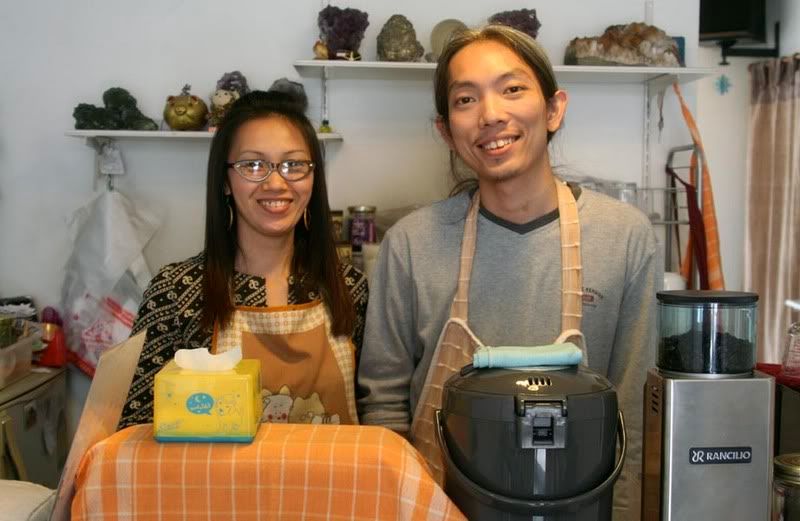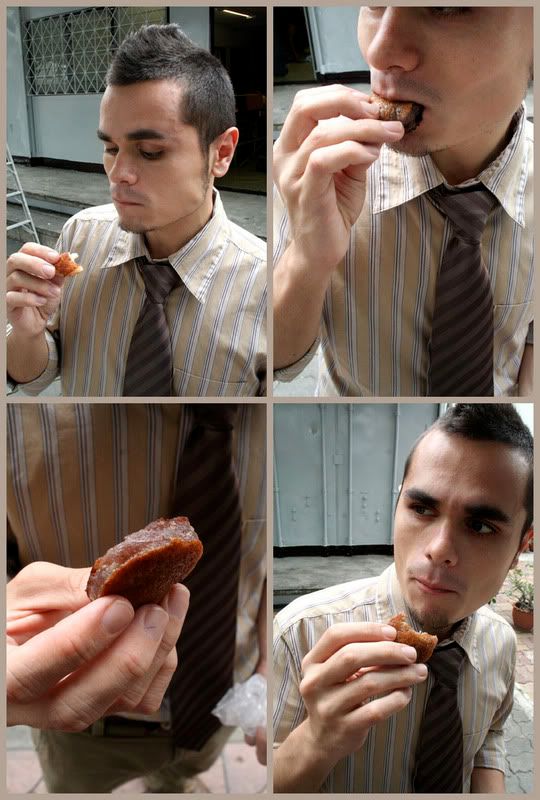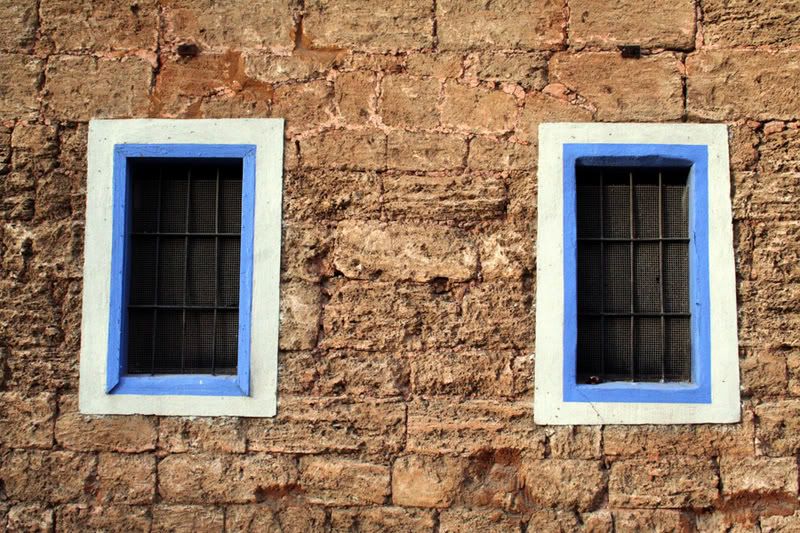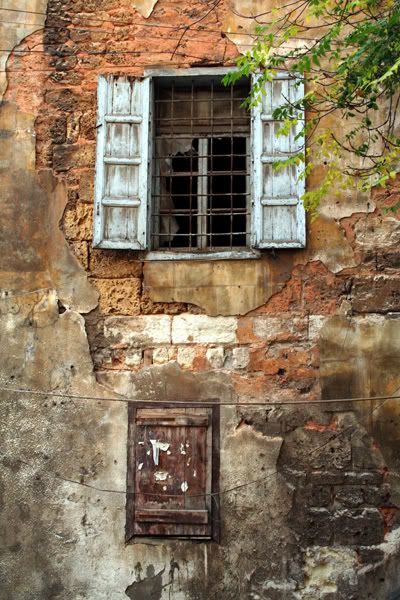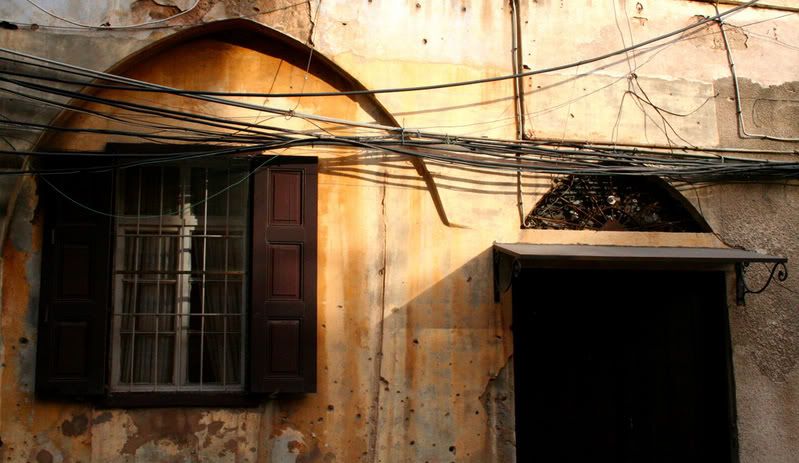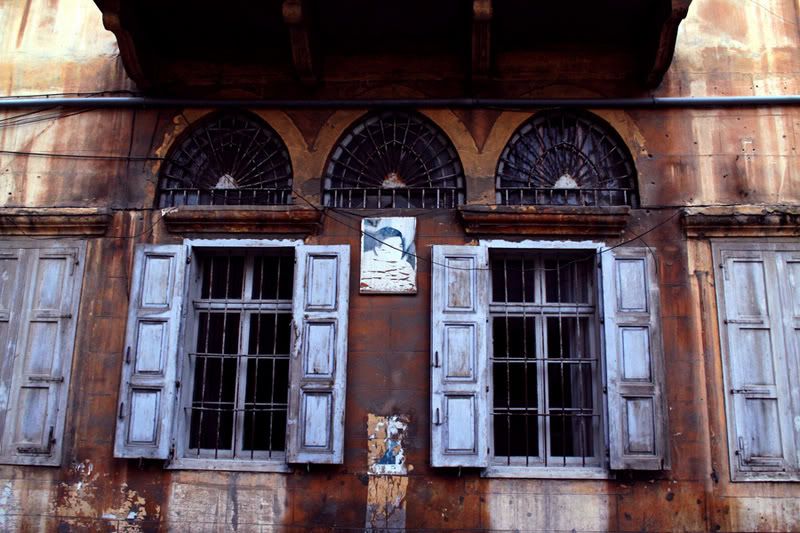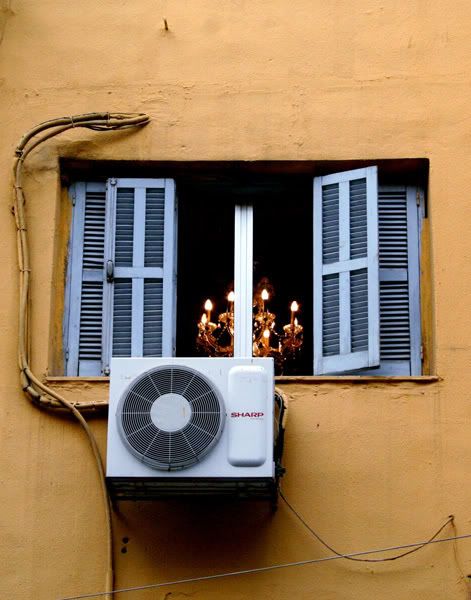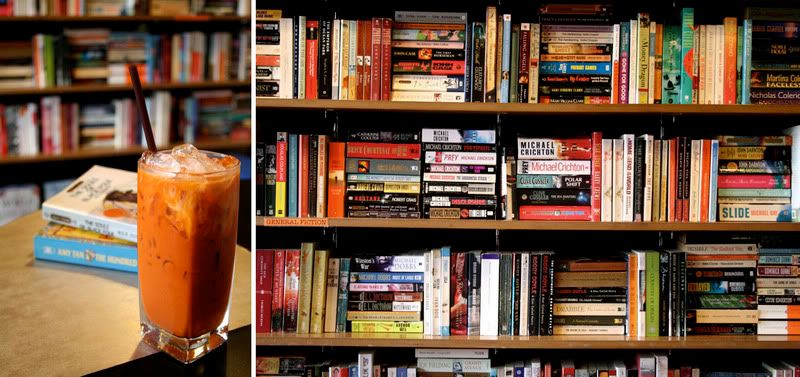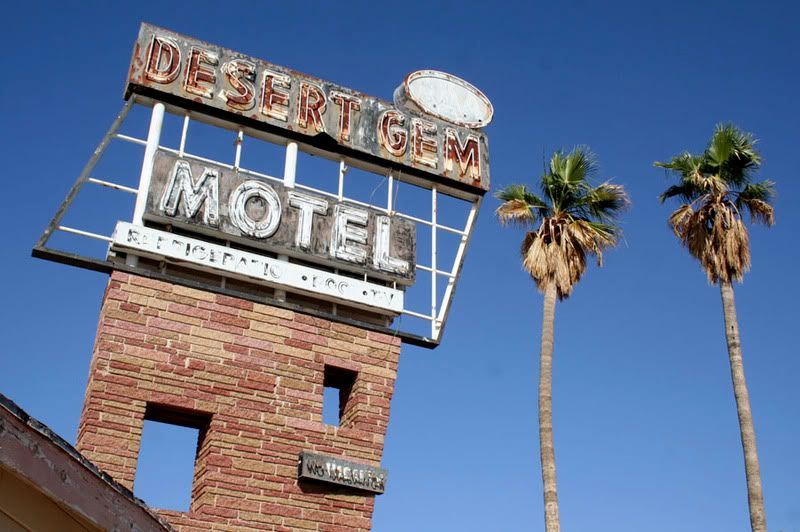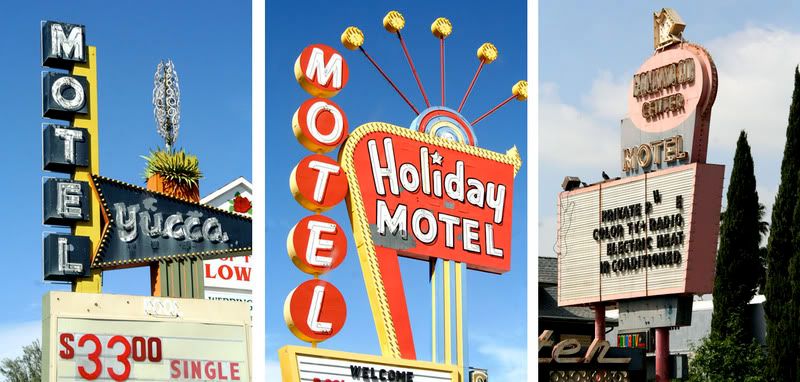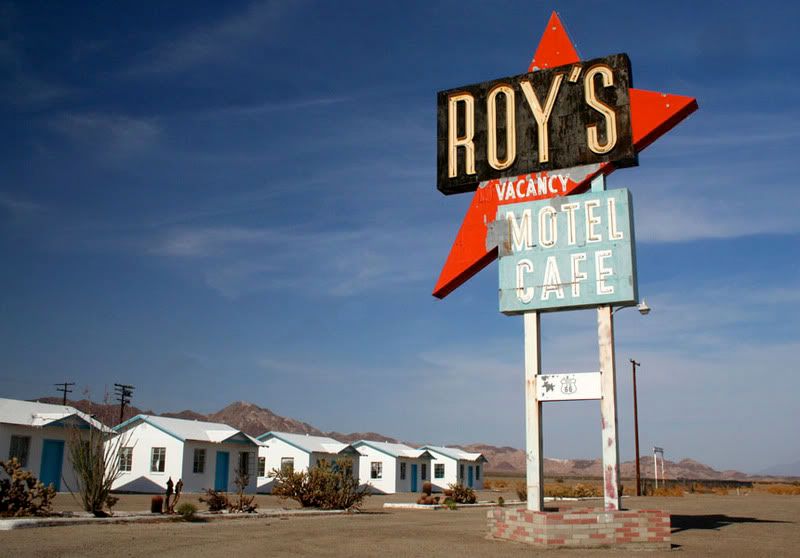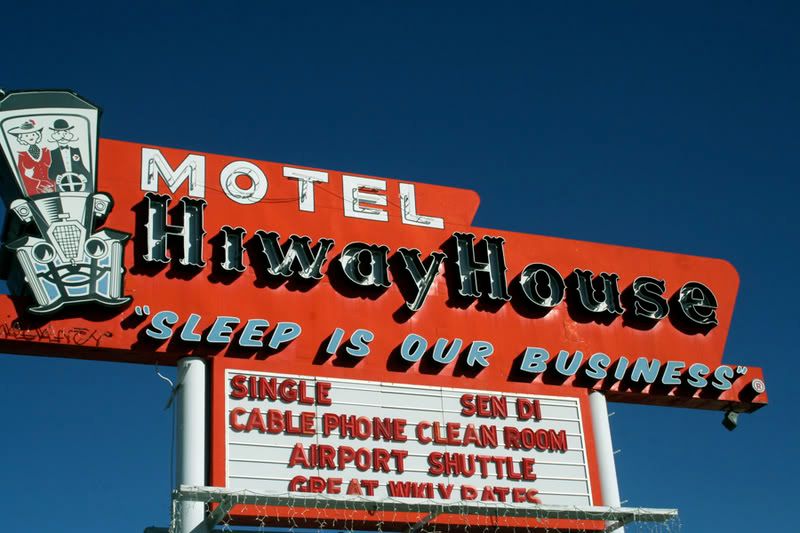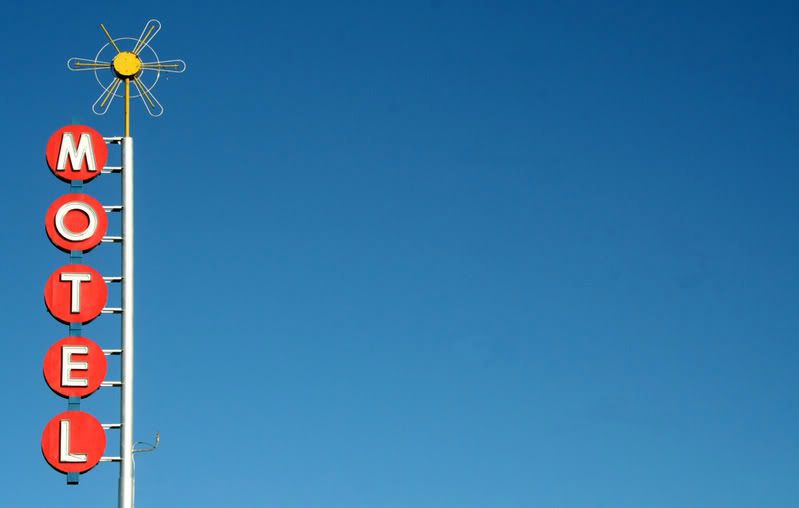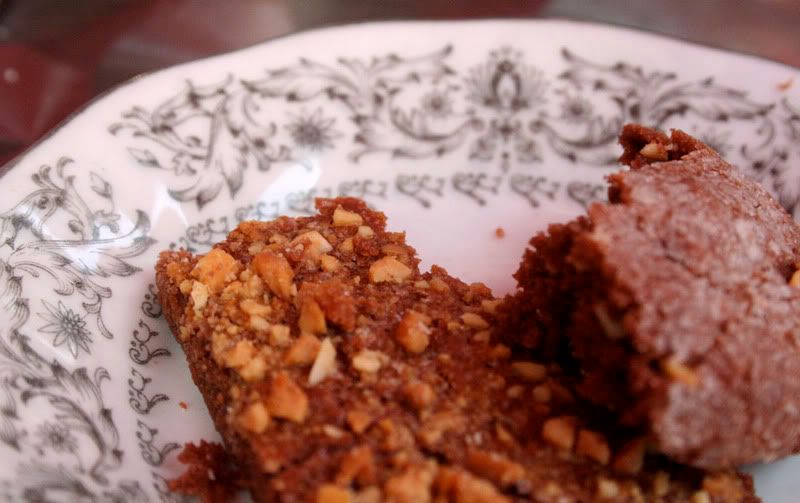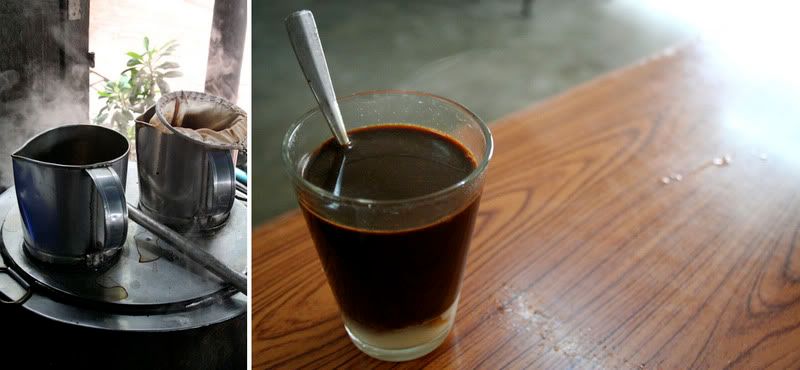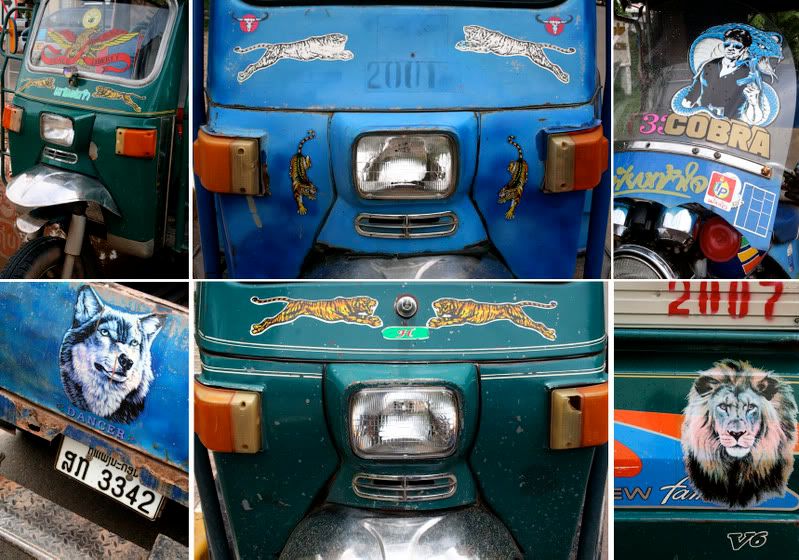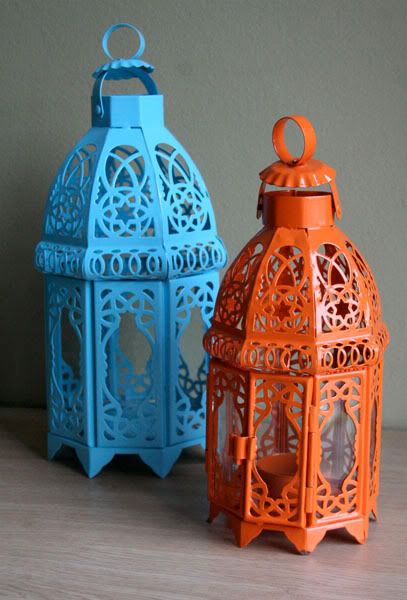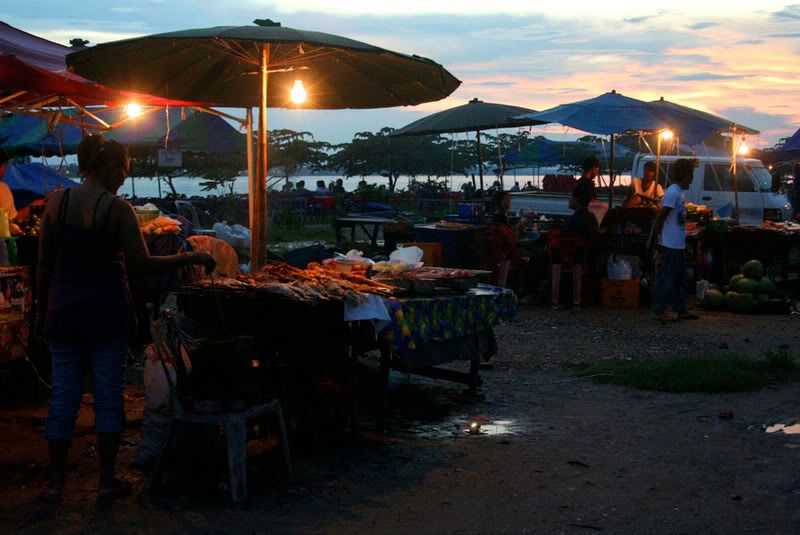
At the end of this past week, Bordeaux and I traveled to Vientiane, the capital of Laos. It's a quiet capital city, with a laid back atmosphere that flows from the muddy Mekong river to the wide untrafficed boulevards. Our visit was primarily for bureaucratic purposes, as we needed to apply for 60 day visas at the Thai embassy, but we took the opportunity to have a mini-holiday. Two days gave us just the right amount of time to enjoy the understated urban-exotic pleasures of the Lao capital.
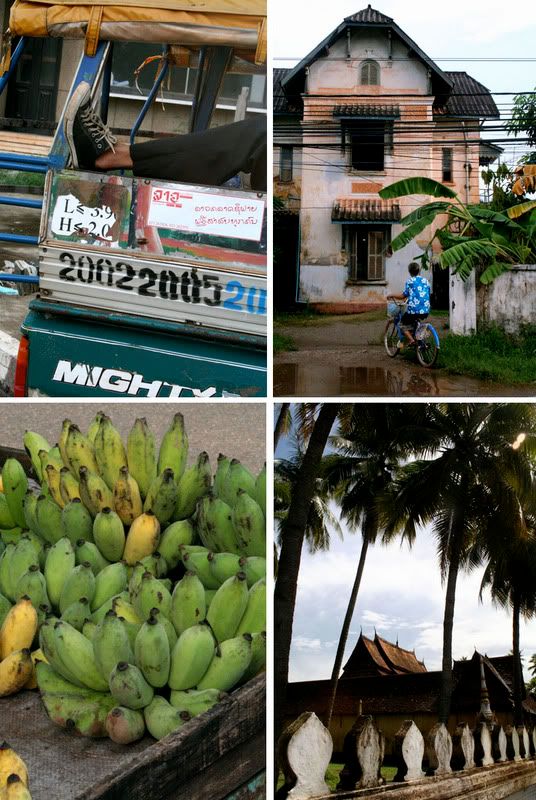
Vientiane is a strange city, hard to describe as either exotic or beautiful, though I think it is both. The city is set among green forest on a bend of the Mekong, looking across the brown waters at Thailand. There aren't too many grand sights worth seeing, but there is still a lot to see. There are traveling vendors, pushing carts loaded with bananas or durian. There are several impressive wats, with golden chedis glittering beneath coconut palms. Perhaps best of all, it has an incredible number of charming cafes and delicious bakeries. Between hours spent in cafes, we managed to find a little time for sight-seeing. We woke up early on the second day to visit The National Museum, which we had missed on our first visit. It was a strange mix of natural history and nationalist sentiment; the dimly lit halls were crowded with concrete dinosaurs, socialist propaganda, and moldy displays on ethnic crafts. There were crude paintings of noble Lao villagers being tormented by French colonialists, and dozens of black-and white photographs labeled to identify 'American Imperialists.' A little later in the day, we visited the city market. Unfortunately, the crafts on sale weren't too interesting, especially compared to what you can find further north in Luang Phabang.
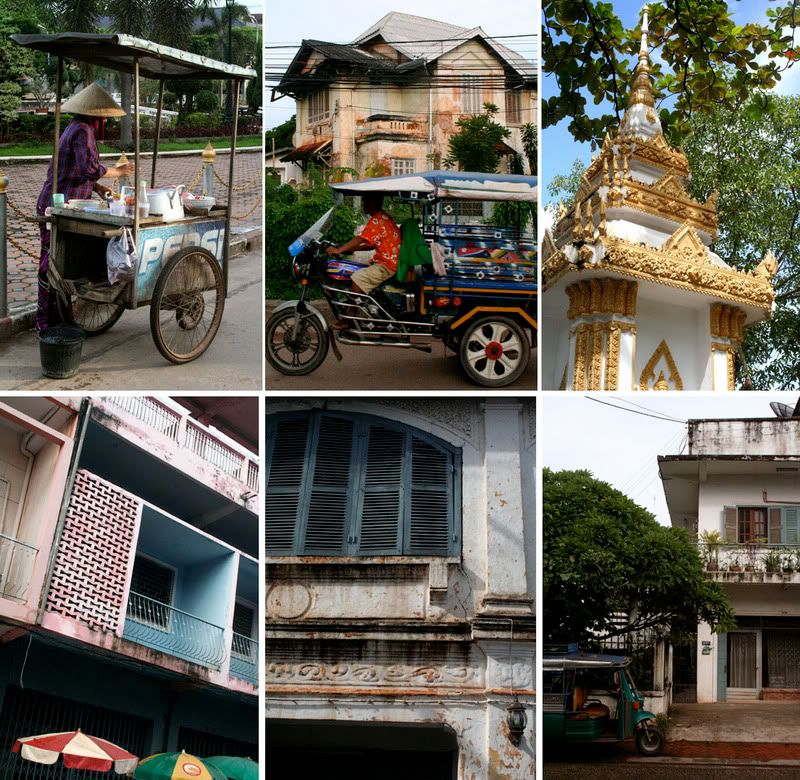
The first thing that struck me about Vientiane
when I first visited in July was the architecture. There are mod 1960s shopfronts, all spare lines and angled windows, and there are graceful colonial villas, wooden shutters and banana palm shaded balconies. And unlike in Luang Prabang, where many of the old buildings have been pristinely restored, most of Vientiane's relics are quietly moldering and crumbling. Even the rather stately colonial mansions that are scattered around the city center seem to be neglected, growing mossy in their overgrown gardens. This gives the city a tone of languid timelessness, of being neither perfectly preserved nor of being wiped out for new development.
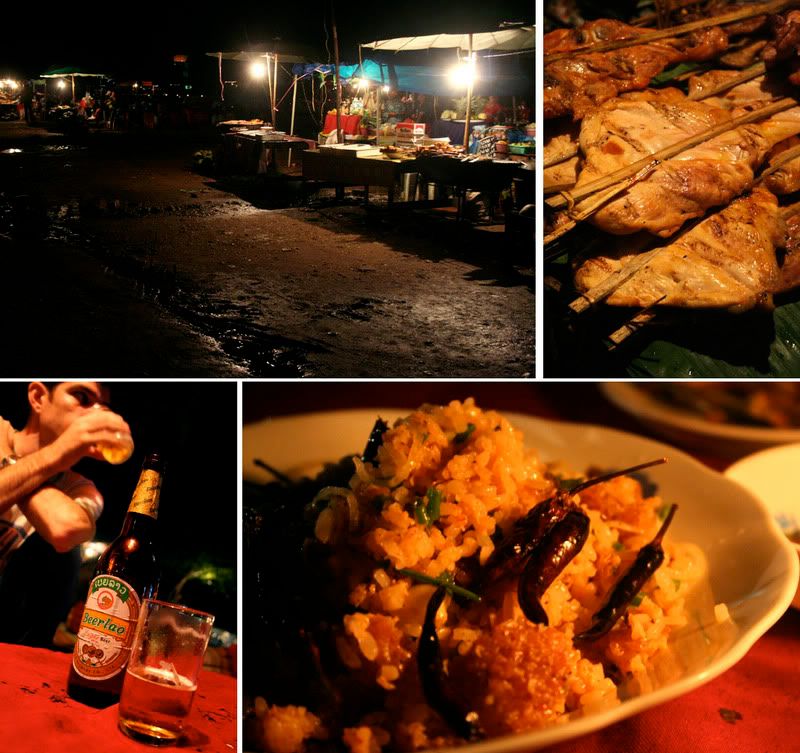
For our only dinner in Vientiane, we enjoyed a Lao feast by the river. At night, a number of food stands set up shop on the escarpment overlooking the Mekong. After finishing a large bottle of Beer Lao from one stand, we searched out another with a fresher looking kitchen. Since everything is out in the open, it's easy to get a quick glimpse of the state of their ingredients and cooking skills. We found a decent looking place that had a busy grill, and a lot of fresh vegetables behind the counter. We ordered a big Lao meal of grilled chicken, spicy papaya salad, and namkhao. The highlight of the meal for me was the the barbecue chicken. While it may not sound too exciting, it is actually a specialty of the area. I had first seen it in Thailand's Isaan region, which shares a similar history, and thus cuisine, with Laos. If bought to-go, it's usually sold with the whole chicken's body splayed on skewers. Since we were eating in, they kindly cut it up and presented it on a plate. There was nothing particularly exotic or distinctly Lao about it; it just tasted like very delicious barbecued chicken. A bit more distinctive perhaps was the namkhao, a dish of brown rice, coconut, vermicelli noodles, and spring onion. It was sprinkled with dry roasted red chilies, which added a smoky spicy flavor, and served with a plate of fresh greens.
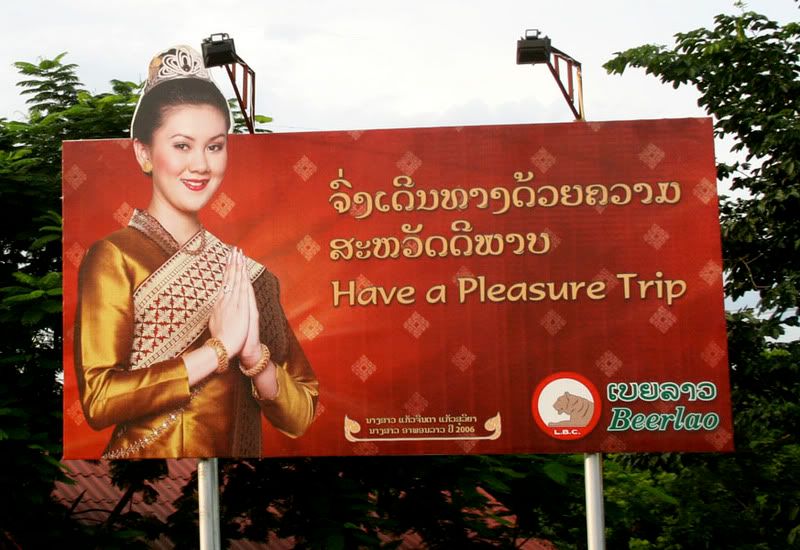
Our two days passed quickly, and after picking up our passports from the consulate we had just enough time for a final stop at our favorite cafe. Before heading for the border, we bought a delicious pate baguette sandwich and two bottles of Beer Lao Dark to enjoy as a last Lao treat on the train. As we crossed the border, we were wished a fond farewell by the brewers of Beer Lao, who wished us to have a "pleasure trip." We certainly did.
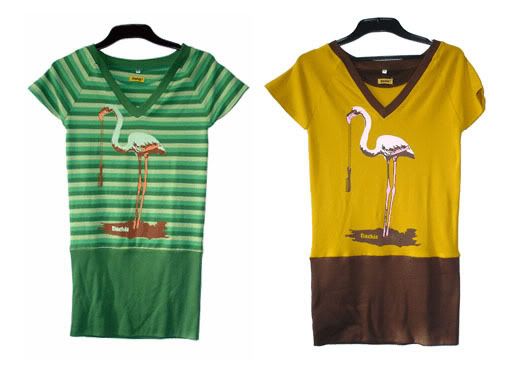 Oh, but before I return to Bangkok completely... one last animal inspired piece by a South African Designer. Darkie is one of the coolest clothing labels in South Africa; it always has a great mix of colors, and playfully Afrocentric graphics. Two of my favorite pieces of clothing that I own are from Darkie: the orange and brown afro tank that I likely wear way too often, and a retro green, brown, and orange track-jacket that I regrettably left in the states. I saw these flamingo dresses when I was in Johannesburg in December- sadly, he didn't make flamingo pieces for men. Maybe a marabou could be a nice male equivalent?
Oh, but before I return to Bangkok completely... one last animal inspired piece by a South African Designer. Darkie is one of the coolest clothing labels in South Africa; it always has a great mix of colors, and playfully Afrocentric graphics. Two of my favorite pieces of clothing that I own are from Darkie: the orange and brown afro tank that I likely wear way too often, and a retro green, brown, and orange track-jacket that I regrettably left in the states. I saw these flamingo dresses when I was in Johannesburg in December- sadly, he didn't make flamingo pieces for men. Maybe a marabou could be a nice male equivalent?
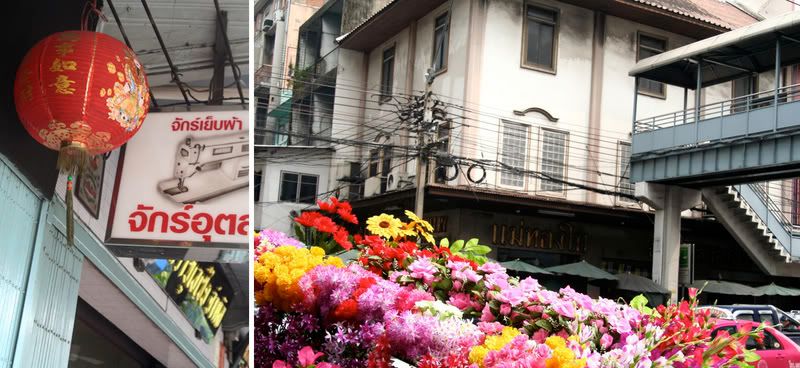
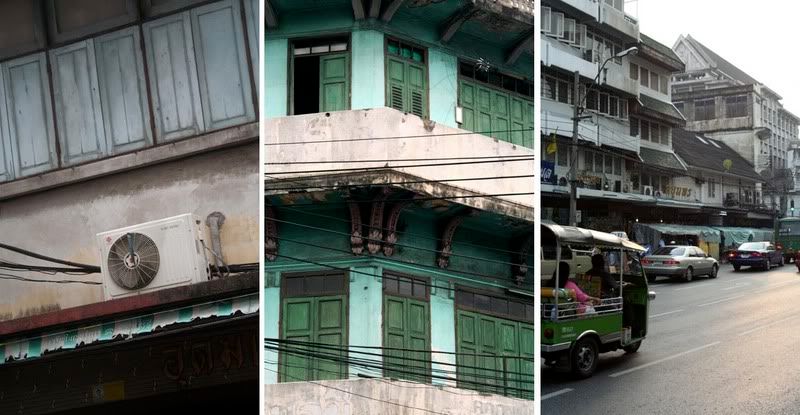


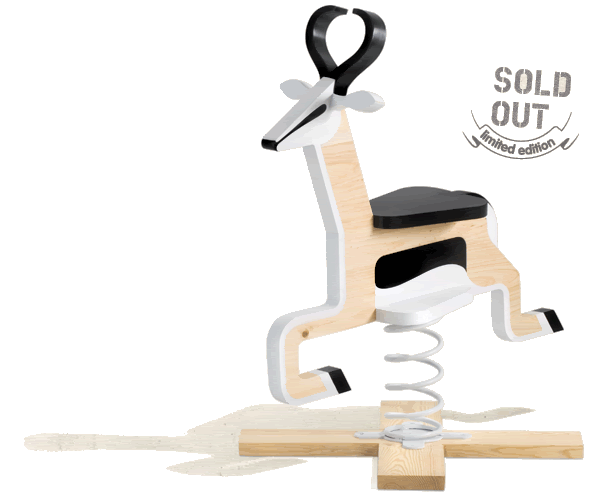
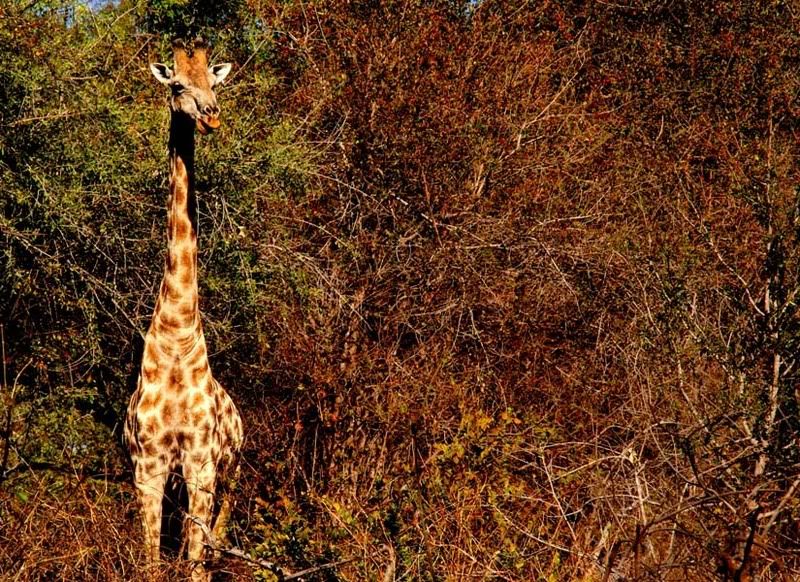

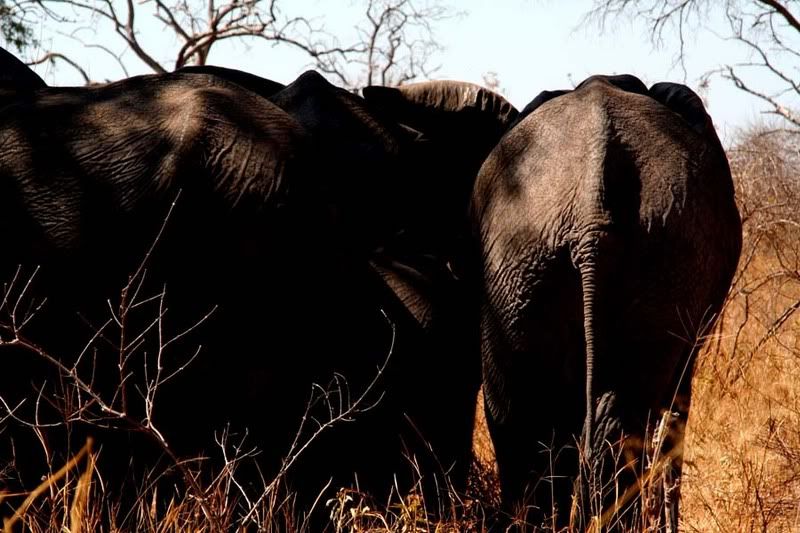

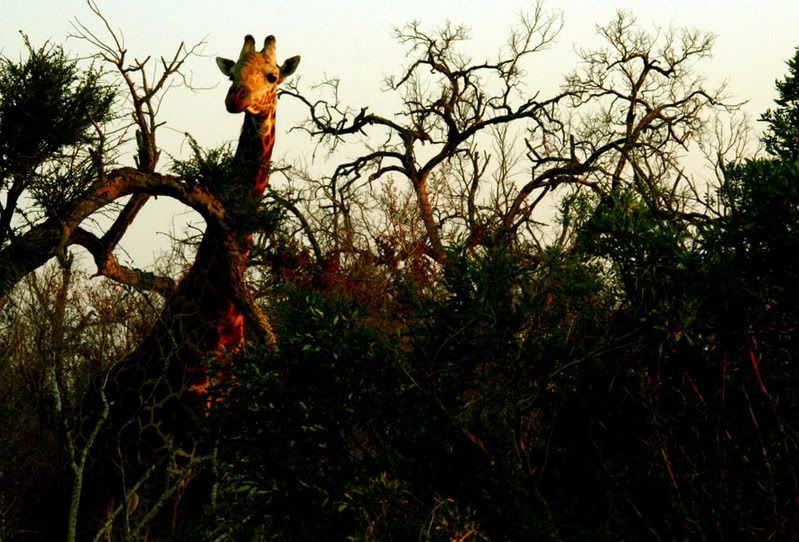 I saw the giraffe photographed above while on a game drive in Swaziland; he watched us intently over the brambles of an acacia, flicking his purple tongue and dark eyelashes. I've always found inspiration in the forms of certain animals, and I find giraffes in particular to be rather handsome. I usually like the way Afrikaans describes the creatures of Africa, but the Afrikaans word for giraffe is kameelperd, or camel-horse, a composite that hardly captures the awkward beauty of these strange creatures.
I saw the giraffe photographed above while on a game drive in Swaziland; he watched us intently over the brambles of an acacia, flicking his purple tongue and dark eyelashes. I've always found inspiration in the forms of certain animals, and I find giraffes in particular to be rather handsome. I usually like the way Afrikaans describes the creatures of Africa, but the Afrikaans word for giraffe is kameelperd, or camel-horse, a composite that hardly captures the awkward beauty of these strange creatures. 

